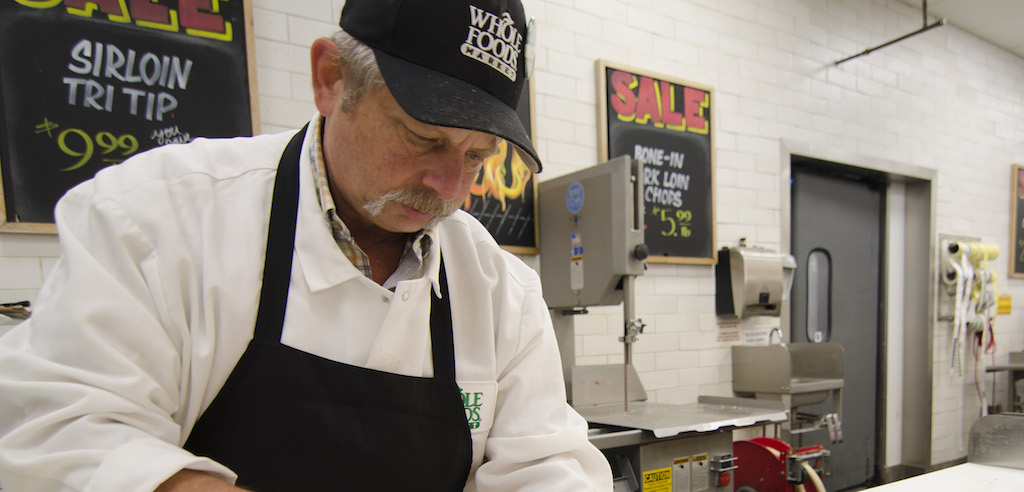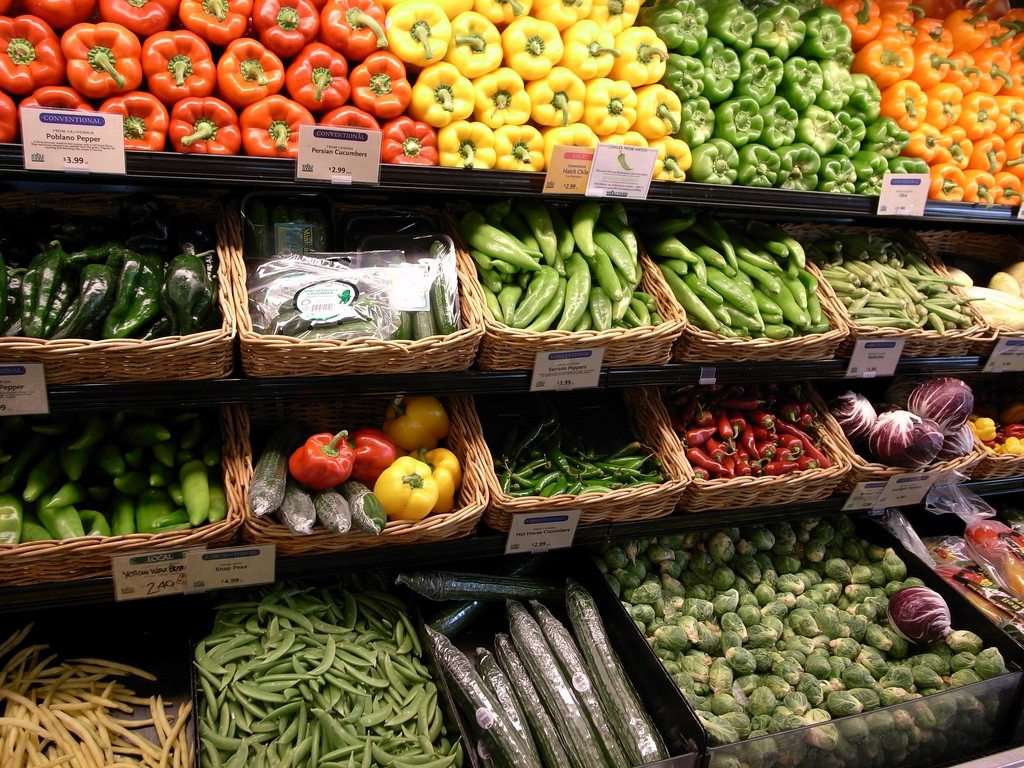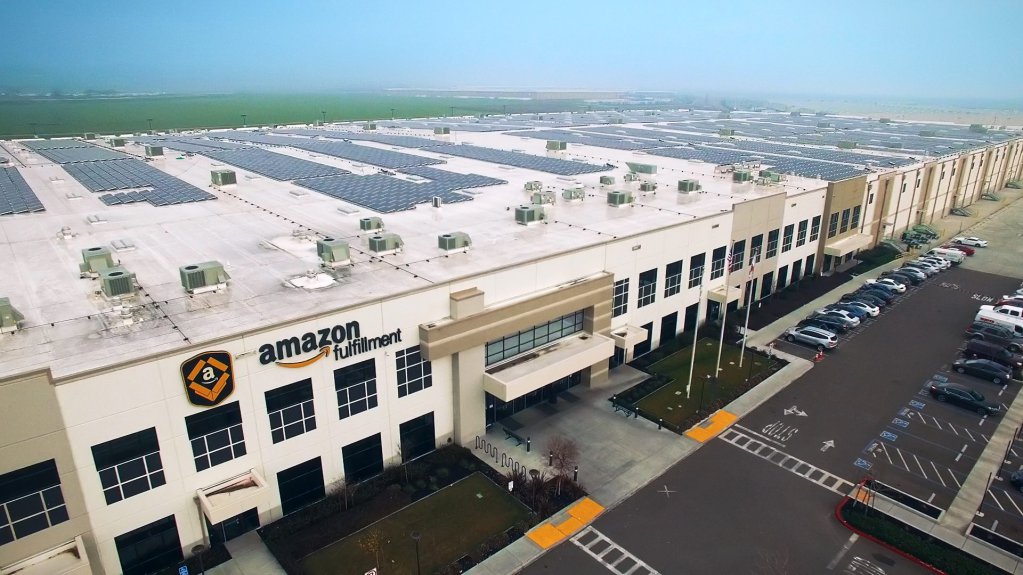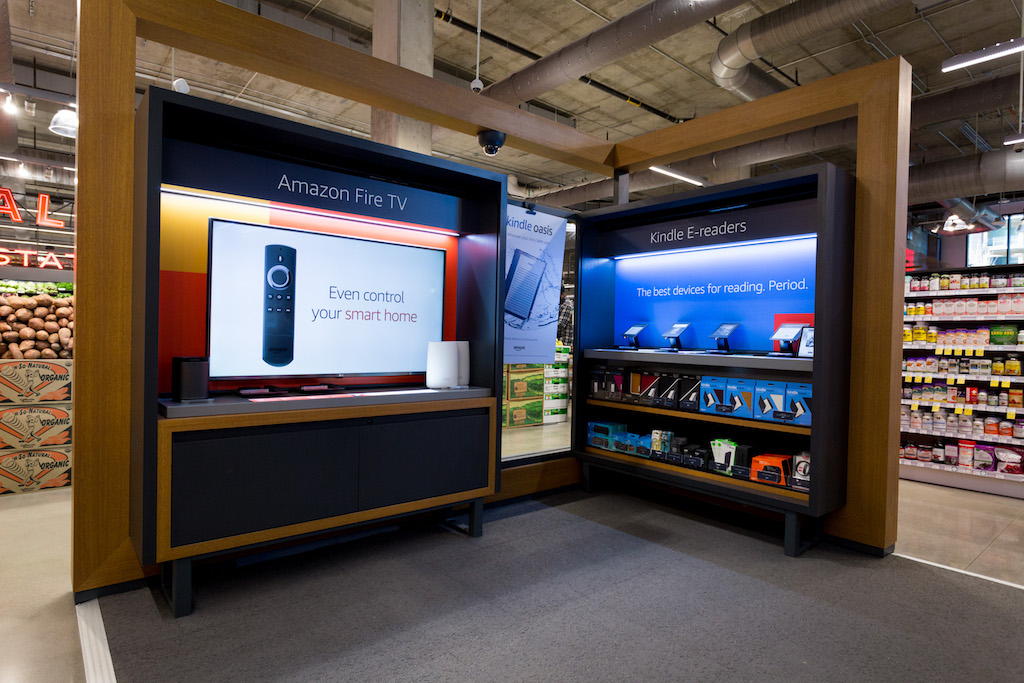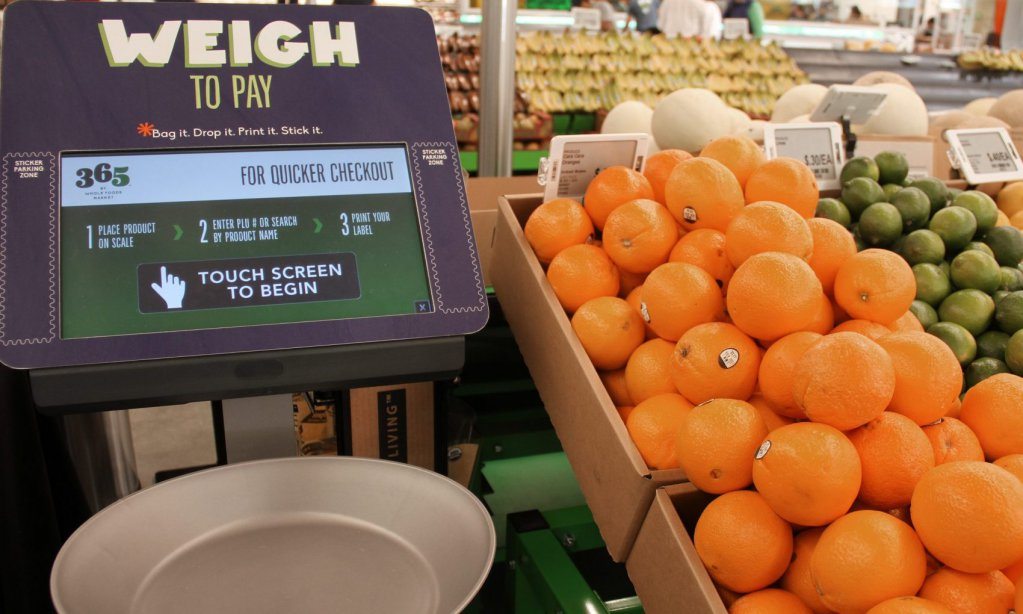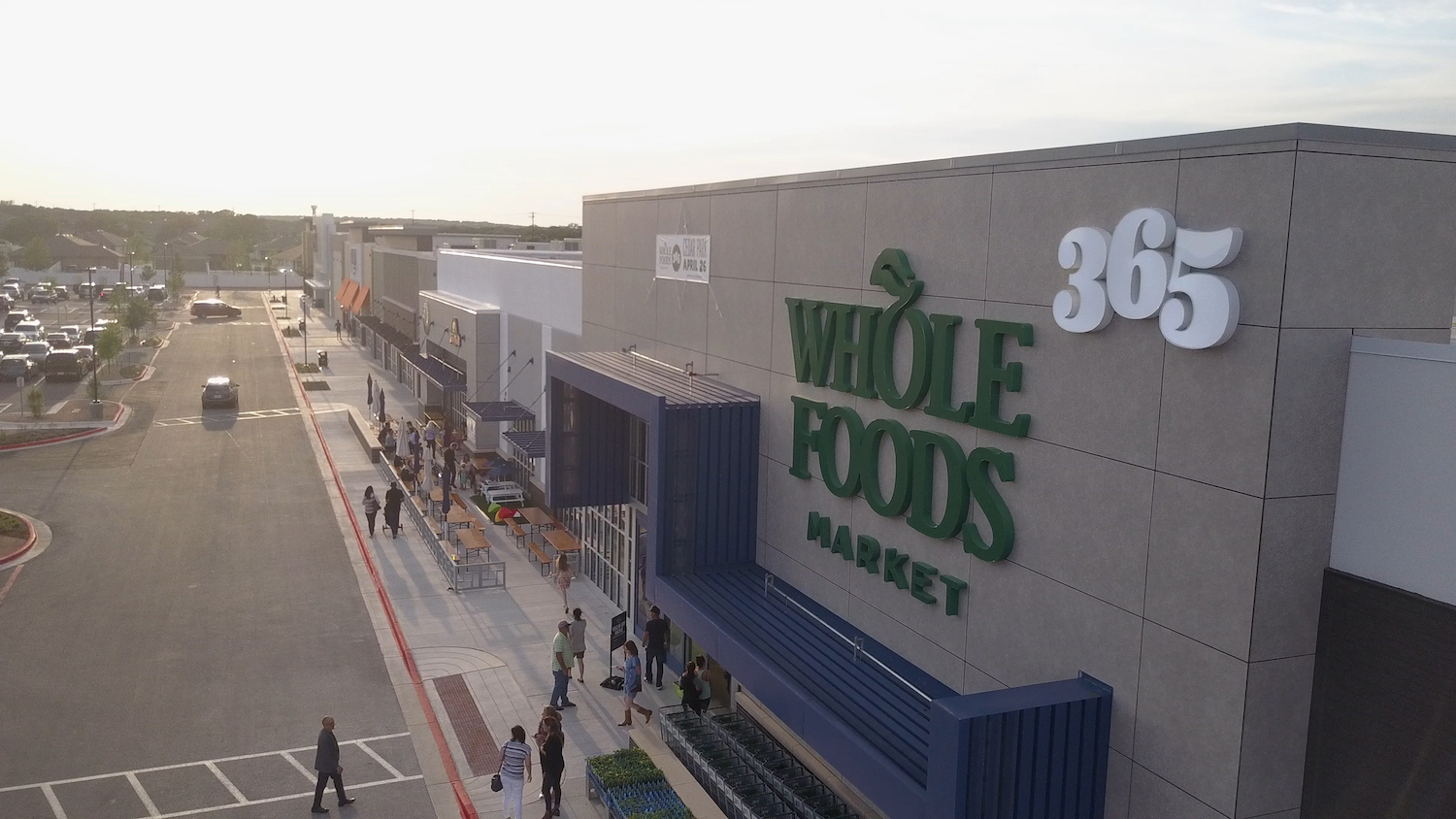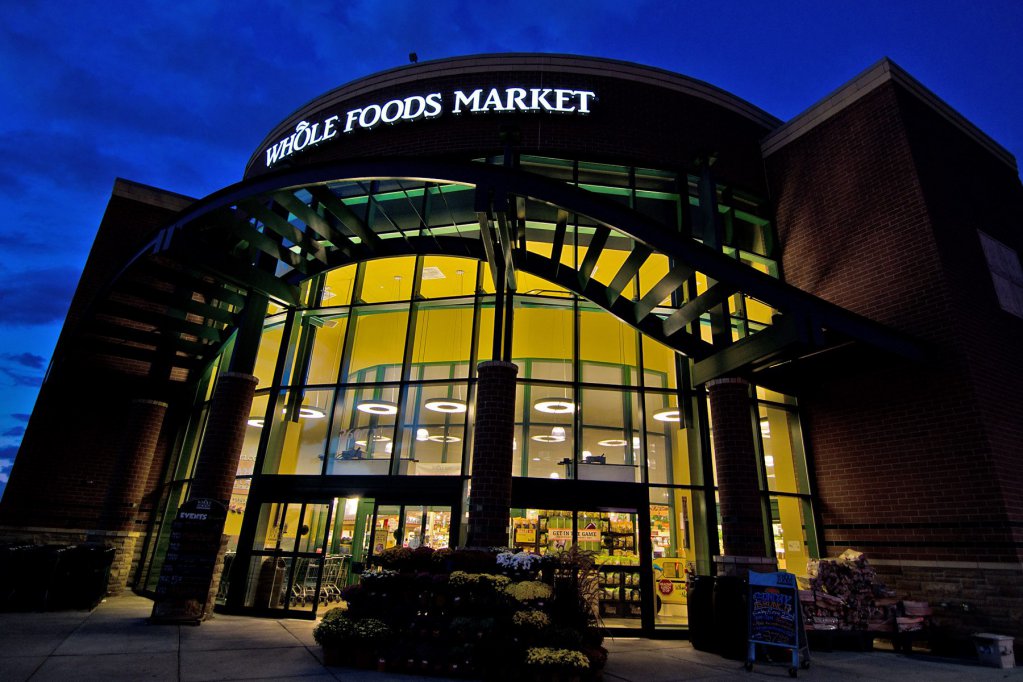
Whole Foods
For some, Whole Foods has been the grocery store with a beating heart, a child of Austin that rose to global prominence by putting people and planet first. For others, it’s a sign of everything that’s wrong with foodie culture: a shrine to precious tastes and sticker shock, thick on marketing but scant on details, not so much invested in building a better food system as the business of making wealthy people feel better about themselves.
The truth is probably somewhere in between. But one thing is undeniable: for years, Whole Foods’ decentralized purchasing system made it unique among major American grocery stores. Most grocery chains play a volume game, using their regional or national clout to buy goods cheaply in bulk. Whole Foods was different. Instead of company-wide buying, it divided the country up into 11 regions, giving each one a high degree of autonomy. This meant Whole Foods could buy at smaller scales, allowing regional purchasing specialists (which the company calls “foragers”) to stock goods from family farms and tiny food startups on its shelves. As a result, you could get stuff at Whole Foods that you simply couldn’t find anywhere else—as long as you could afford it.
It’s looking more and more like that era is drawing to a close. That’s in part because organic produce (often not grown here, but imported) can now be found at grocery stores across the country; at the same time, mega-retailers like Walmart, Target, and Kroger have piloted their own, more modest local programs. The industry has caught up, more or less. And that’s put Whole Foods in a tough position. As Patrick Clinton argued last month, the company faces a tough choice. It can either double down on being different, or it can start to play by everyone else’s rules.
Increasingly, it seems, Whole Foods will choose the latter. Last year, the company announced plans to centralize its purchasing—to buy product, in other words, the same way that normal grocery chains do. And the company’s second-quarter earnings call last week offered more clues about where it is headed.
First, CEO John Mackey said he expects centralization to be complete before the end of the calendar year. It’s supposed to save the company a lot of money, and not just because a centralized Whole Foods will be able to buy more cheaply, and at larger scale—though that’s part of it. A more streamlined inventory will also allow it to invest in the modern point-of-sale software that the big players all consider standard. Rather than keep charging the same prices for cheaper, more efficiently managed goods, and return the profits to the shareholders, Whole Foods is going to do what once might have been unthinkable: it’s going to try to compete on price with Walmart.
“We’re going to turn around and take the category management savings that we get from purchasing economies and cutting, and reducing brokerage fees,” Mackey said on the call. “That’s all going to be reinvested in price.” The price dip, he says, should increase average basket size and get more customers through the door.
Whole Foods also announced an organizational shakeup last Wednesday, replacing its CFO and appointing five new independent directors to its board. The new directors are surely meant to demonstrate financial seriousness and bring in retail expertise, but their backgrounds are revealing. They don’t really have much to do with food, and that’s probably a sign of things to come. Two are from the financial industry. Two are from big box stores: Ken Hicks is the former CEO of Foot Locker, and Sharon McCollam has been CFO at both Best Buy and Williams-Sonoma. The most revealing addition, however, is also the most relevant: Ron Shaich, Panera’s longtime CEO.
Shaich is a legend in the restaurant industry, the guy who built Au Bon Pain from three Boston stores into a global brand. He could have retired when he sold in 1999, but instead went on to turn ABP’s bread division into Panera Bread, the country’s largest fast-casual chain. Shaich brings some highly relevant experience to the table, including a successful rewards program that he helped launch at Panera. (Whole Foods, if you can believe it, has never offered coupons or a loyalty card; that’s going to change as the company goes after more value-minded shoppers.) But he will probably be most useful in addressing one of the central questions Whole Foods faces. By trying to compete with Target on price, won’t the company sacrifice the brand it’s built as the benevolent outsider, the grocer that really does things better than the rest?
It should be said that Whole Foods has always been far from perfect. In a 2006 letter to Mackey, Michael Pollan offered a trenchant criticism: “I see more signage about the importance of local produce than I see actual items of local produce,” he wrote. It’s likely that disparity will only grow as Whole Foods gets less nimble and more centralized, making it harder and harder for it to bother with anyone selling goods on a small scale. But that doesn’t mean it’s going to tone down its do-gooder image. For evidence, look no farther than Panera.
Somehow, though there’s one on every corner, Panera has managed to style itself as a purveyor of better, better-for-you sandwiches. A recent USA Today article described the “panera-ization” of fast food, with competitors like McDonald’s trying to offer more “artisanal”- seeming goods. But does the company really provide a better alternative, or is it just a higher price point and good marketing? The record’s mixed. Over the years, Panera has made a real effort to improve animal welfare, winning praise from organizations like the Humane Society of the United States for its efforts to bring farm animals out of confinement. It shares its progress in an annual report: 95 percent of its beef is from cows grass-fed on pasture throughout their lives, and 93 percent of its pork suppliers don’t pen sows inside gestation crates. That’s solid progress.
But what Panera can’t do is what Whole Foods used to be good at: buying nimbly on a smaller, local scale. Even when it fights for changes to animal welfare, it’s still buying commodity meat; it demands changes only from the world’s largest producer suppliers and packing companies. That’s one way to do a lot of good, but it doesn’t help build local infrastructure, address industry consolidation, support small business, or do many of the other things the food movement is supposed to be about. I’d guess you’ll never see a Panera sandwich with pulled pork or cucumbers from the farmer down the road. In recent years, the company seems to be focusing less on what the food is than what it isn’t—it’s all well and good to take artificial colors and flavors off the menu, which Panera routinely boasts about, but it’s not going to reform the food system.
The new developments suggest that Whole Foods is going to look more and more like Panera. It’s still going to tout itself as the better option. And it may really continue to bring some large-scale reforms, as it’s done in the past, using its clout to change norms in agriculture at its largest scale. But those changes will be top-down, focused on the commodity market. Whole Food’s days as a grassroots, bottom-up reformer—a company that found room for the little guy, even if not as often as it made it seem—are likely on the wane. We’ll see if that, combined with cheaper prices, will be enough to bring more people in the door as Mackey hopes—or if, instead, they’ll just continue down the road to Walmart.

